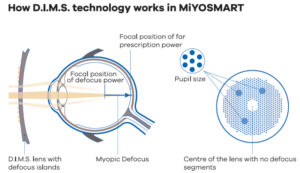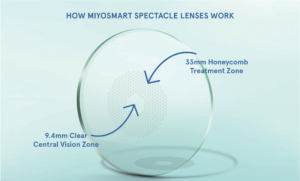What exactly is dry eye?
Dry eye is a broad term describing any range of factors that reduce the volume of tears in the eye. Tears protect the front of the eye, providing lubrication and nutrients to the cornea and creating a smooth front surface for clear vision. They consist of a watery layer to keep the eyes moisturized with an oily layer on top. The oily layer is particularly important for maintaining a smooth surface for consistent vision, and preventing excessive tear evaporation. A reduction in the tear layer may be caused by blocked or poor performing oil glands.This is called Meibomian Gland Dysfunction (aka MGD).
Without good oils, the tears cannot lubricate the eye properly, causing symptoms which vary from a constant niggle, to severe irritation that affects your quality of life. This leads to dryness, irritation, redness and blurred vision.
- Symptoms include
- Red, irritated or watering eyes
- Dry, scratchy or itchy eyes
- Blurred vision
- Burning sensation
- Sensitivity to bright light, cold wind or air conditioning
- Discharge or crusting around your eyelids in the morning
Who’s at risk of getting dry eye?
Dry eye tends to affect females more than males, and can be part of the natural aging process (especially during menopause). As well as a side effect to many medications, including oral contraception.
People who have undergone cataract surgery, laser eye treatment or wear contact lenses may also suffer from this condition. If you have arthritis, asthma, gout, diabetes or if you are over 40 years old, you may also be prone to Dry Eye. Dry Eye Syndrome can also be symptomatic of some diseases including lupus, rheumatoid arthritis, and Sjögren’s syndrome.
Treatments
While there are several ways to treat Dry Eye Syndrome, the most common treatment is the use of artificial tears. These contain oils similar to those produced by the Meibomian Glands and help prevent excessive tear evaporation. However the treatment is ongoing and requires the insertion of these artificial tears into the eye at regular intervals during the day – as frequently as every hour in extreme cases.
Although these artificial tears in most cases help alleviate the symptoms, they do nothing to treat the underlying cause of Dry Eye Syndrome, so the treatment is always ongoing. However this is all about to change.
Take the Dry Eye Self Test
If you answer yes to any of the following questions it is possible that you have Dry Eye Syndrome.
- Do you have red eyes?
- Do you have watery eyes?
(these can be due to an ineffective tear film)
- Do your eyes feel dry?
- Do your eyes feel scratchy?
- Do your eyes feel irritated?
The best treatment for dry eyes
An innovative treatment using Intense Pulsed Light (IPL) which directly affects the output of the Meibomian glands and subsequent improvement in the quality of the tears has just become available.
Several studies have shown that with just three IPL treatments, taking only three minutes per session, 86 to 90% of patients reported reduced symptoms and that the quality of the oil layer in their tears showed a measurable improvement. This is a non-invasive treatment which requires no special preparation prior to the IPL sessions, is relatively comfortable, and patients can immediately return to their normal lives. Except for the improvement of symptoms which in some cases is immediate, IPL treatment has no side-effects, is safe and has no long-term complications. The IPL device is medically certified for use in many countries around the world including Australasia.
Book your dry eye assessment now
Ready to check your eyehealth?





